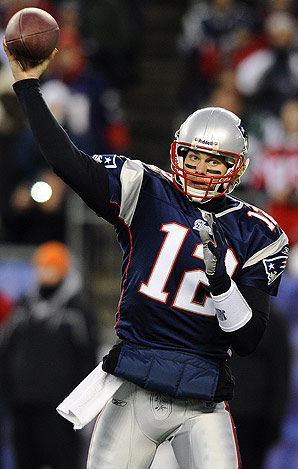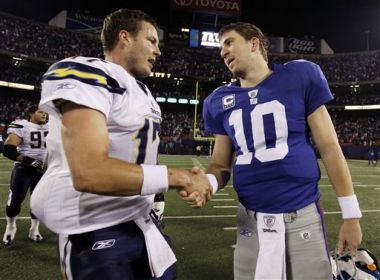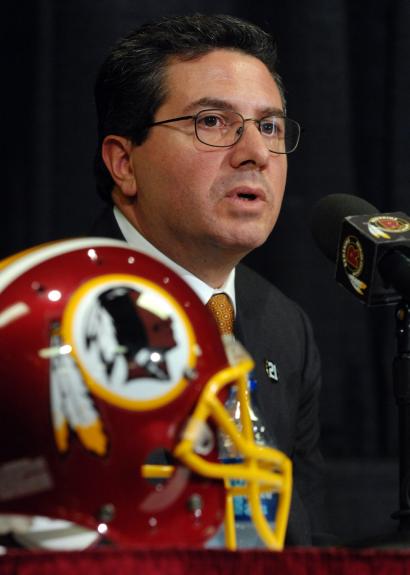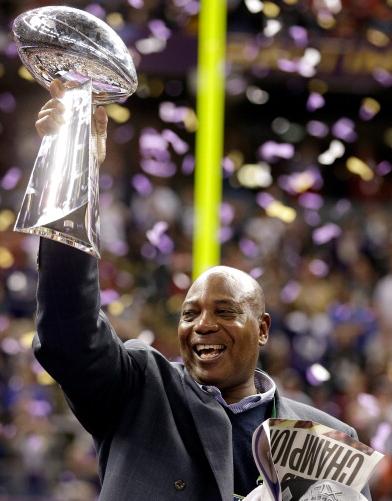How four NFL franchises have relied upon “stability” as the blueprint for success

Photo credit: ESPN.com
Over the last thirteen NFL seasons, there have been many memorable moments, from Tom Brady kicking off the decade with an improbable run as a “nobody,” or David Tyree’s extraordinary catch in Super Bowl XLII. Since 2000, we have witnessed four NFL franchises win multiple Super Bowls in that span. Those teams include the Patriots, Giants, Steelers and Ravens. Year after year, it seems that the same NFL franchises are in the mix for another Super Bowl run. In a sport that relies so much on your key players staying healthy, how do these certain organizations continue to be the benchmark for consistency and success?
Ownership
It all starts at the top. At least that’s what all the sportswriters and pundits like to say. But, if we are looking for a blueprint, it’s simply true. Great ownership puts GM’s, scouts, coaches and players in their proper place, and grants them the freedom and confidence to lead. In Dallas, it seems as though Jerry Jones believes it’s his job to not only own the team, but also to be the team’s decision maker on the coach and players. Certainly, inside all NFL franchises, the owner will and should have an impact and say into what goes on within the organization. But, over the past thirteen seasons, we have seen owners like Jones, the late Al Davis of the Raiders, and Woody Johnson of the Jets overstep their bounds and try to make too big of a splash, and have too much of an influence in the personnel decisions of the team.
Let’s be honest: great owners play their role, and let the people they have put in charge do what they believe is best. This is truly where success starts in the NFL, creating a trickle-down effect which will be discussed over the next several segments, from GM’s, to coaches, to players.
The success stories are owners such as Robert Kraft of the Patriots, or John Mara of the Giants, who have given the reigns to people they feel are qualified to make personnel and coaching decisions. They stay out of the coaches, GM’s and scouts way as they themselves realize they are not the ones qualified to make football decisions. The Mara and Tisch families, who own the Giants, along with the Rooney family, who own the Steelers, have a similar way of conducting business. This is no coincidence. These families of their respected organizations realize that when they become bigger than the team, they will fail. Loyalty is one of the main components that run deep within the Giants and Steelers franchises. New York and Pittsburgh, however, are not alone. Steve Biscotti, owner of the Ravens, also deserves credit for providing stability to an organization that came so close for so long, only to lose the AFC Championship twice in the past five seasons. He didn’t panic. He didn’t fire his longtime GM, or young head coach, and he certainly didn’t lose faith in his quarterback Joe Flacco. Biscotti let them figure it out. In other words he let them do their job. Biscotti’s patience helped the organization reach the pinnacle at the conclusion of 2012, by winning Super Bowl XLVII.
General Managers

Photo credit: Examiner.com
Continuing on the theme of stability, each of these four franchises have had the same GM, or hired within the organization for the past decade. This is vital for a team’s success to continue on the same path even when a GM retires or leaves. For these four teams, this doesn’t happen often. The Giants were led by Ernie Accorsi, from 1998-2007, who made many notable moves over his nine year tenure with New York. His biggest move, however, was the draft-day trade that brought Eli Manning to The Big Apple. At the time, it was a controversial and risky move, when he traded Philip Rivers’ draft rights along with three draft picks to the San Diego Chargers for San Diego’s number one overall pick, which landed him Eli Manning. This move has to now be considered a win, since Manning has gone on to win two Super Bowls. As GM, Accorsi and the Giants have always been about building through the draft, and not free agency. This “draft-over-free-agency” theme is ultimately the bigger story since director of player personnel, Jerry Reese, took over the reins in 2007. Reese was a part of Accorsi’s staff for years prior to getting the promotion, as Reese served as a scout in the 1990’s and then as the director of player personnel for much of the 2000’s. The advancement of Reese helped keep the trend moving in the same direction, which concluded that the draft was far more important than inking the big name free agents.
The two divisional rivals, the Pittsburgh Steelers and Baltimore Ravens have also shared success stories over the past decade. Their blueprint is not much different – hard-nose defense, a solid running game, and GM’s who, just like the Giants, prefer to build through the draft instead of free agency. Pittsburgh’s GM, Kevin Colbert, and Baltimore’s GM, Ozzie Newsome, have both been cornerstones for their respected franchises in building through the draft. Colbert helped draft key players such as Ben Roethlisberger, Troy Polamalu and Brett Kiesel. Newsome similarly built the Ravens through the draft, notably drafting Joe Flacco, Ray Rice and Terrell Suggs.

Photo credit: ESPN.com
Two storied franchises over the past decade who have tried to make an impact through splashy free-agent acquisitions are the Washington Redskins and Dallas Cowboys. The Redskins, led by owner Daniel Snyder, have always been interested in making headlines. Unfortunately, most of their headlines occur during the off-season. Recent free-agent additions such as Albert Haynesworth, Antwaan Randle El and DeAngelo Hall have all been established as failures. The Redskins have won just one playoff game since 2000. And their NFC-East rival, the Dallas Cowboys, haven’t fared much better over the past decade. The Cowboys bringing in players such as Terrell Owens and Drew Bledsoe (towards the end of his career, no less), have rarely delivered much success to the franchise. Dallas has just one playoff victory since the mid-90’s.
And that’s not to say bringing in a key free-agent or two cannot work – but teams such as the Cowboys or Redskins seem to have a history of bringing in low-character guys who do not work hard once they are paid the big money, and cause locker-room issues amongst other players and coaches. The Giants, Steelers, Patriots and Ravens have all brought in free-agents, but many of their additions can be deemed successes. When the Giants signed Plaxico Burress in 2005, ironically as the Steelers did not want to pay him the money he was demanding in order to be retained, New York’s search for a big target to pair with the young Eli Manning turned out to be a vital addition to a team that went on to win a Super Bowl a couple of seasons after Plax’s arrival.
At the end of the day, these GM’s follow very similar blueprints for success, but what some NFL teams are lacking is the understanding to build mainly through the draft instead of free agency. Of course, it helps when you can scout and draft as well as these four NFL franchises.
Coaches
If there’s an award given for coaching consistency, that award would have to be given to Bill Belichick, head coach of the New England Patriots since 2000. Over the past thirteen seasons, the defensive-minded guru has led the Pats to five Super Bowls, including three victories. Although Belichick has been an influential coach in the NFL for more than two decades, his tenure in New England has certainly produced one of the most consistent teams year after year. His lack of personality and headliners for the press has flown him under the radar at times, but it clearly isn’t about Belichick. It’s not even about the players. It’s about the team. One of the critical areas of leadership for an NFL franchise is from its head coach. In Pittsburgh, Mike Tomlin smoothly transitioned into his role, following the thriving Bill Cowher era, and the Giants have stuck by Tom Coughlin through some late-season collapses (many of times I was calling for his head).
The decisions by these owners and GM’s is part of the stability model that this entire article is based upon.
This patience, resolve, and commitment to their coaching staffs shouldn’t go unnoticed. Coaching is obviously key in the NFL, but it seems that many staffs are constantly in flux. This never allows young players, specifically quarterbacks, a chance to get comfortable. Great franchises stick by their GM’s and players, but maybe even more importantly, their coaches.
Players
Ownership, general managers, coaching . . . it’s all important. But, what about the players? Key franchise players, starting at the quarterback position, have allowed this success to be possible. Starting with Tom Brady of the Patriots, as a sixth round find, who no one but the Patriots believed in (if they even did), took a franchise from mediocrity to the best team of the decade. Eli Manning and Ben Roethlisberger are just behind, both continuing proud and storied franchise traditions by ushering in their own era of success. And just last year, Joe Flacco of the Ravens, finally got himself and his team over the hump by winning Super Bowl XLVII.
Isn’t it more than just the quarterback, though? I’d like to think so. As a fan, we redundantly see the same teams get top five draft picks over and over again. Have these teams really screwed up this many times on their top picks, or is the rest of their franchise that bad? I think it’s a combination of both. The Patriots and Giants, who seemingly find steals either in the draft or through free agency every season, create sustained success through this method. Tom Brady, Ahmad Bradshaw, Victor Cruz, come to mind immediately. This depth allows them to not only find break out stars like those listed above, but also fill their team with solid role players and back-up’s in a sport where depth is essential in determining your success.

Photo credit: footballnation.com
For many of these prosperous franchises, team accomplishment results in certain players looking for a salary increase. Such was the case this past season with the Baltimore Ravens. Ozzie Newsome, general manager of the Ravens, had some very difficult decisions to make, as to who to retain from the Super Bowl winning team, and who to let go. He decided that Paul Kruger, Bernard Pollard, Anquan Boldin, Cary Williams, Dannel Ellerbe and Ed Reed would all be expendable. To some fans, it was painful to see players like Reed and Boldin depart. Both were clearly fan favorites and key stars in the Super Bowl run. But, a successful franchise such as Baltimore showed that in a salary cap league, they cannot cripple their future by spending top money on aging stars, but rather allocate that money towards their up and coming players. This tough, but necessary decision, is one of the many difficult ones that Super Bowl winners of the past decade have been forced to make. Ultimately, it’s one of the key choices that lead to long-term success in the NFL.
Overall, the stars and captains of these four franchises have been a key in their decade long run, but so has the imperative depth that comes with any Super Bowl champion. And if there are teams that know Super Bowls since the year 2000, its New England, New York, Baltimore and Pittsburgh.
Final Thoughts
I believe that this stability has a trickle-down effect, created by ownership and propelled through the GM, coach, and down to the players. It can no longer be considered a coincidence that so many fourth round picks, or undrafted free agents that are picked up by these franchises, end up having unheralded success. It’s obvious that over the next few seasons, we will have several other teams step into the same fray as these four franchises. The 49ers, Seahawks, Packers and Falcons are teams that are clearly on the horizon. But, the real question is, will they be able to follow the blueprint set forth by the four franchises of the decade, or will they come up with their own unconventional methods of success? That is something that is yet to be determined.
 Follow
Follow


Speak Your Mind